Soil
gary.maguireSoil and potting mix
Contact: Gary Chastagner, 253-445-4528 | WSU Puyallup Research & Extension Center, 2606 West Pioneer, Puyallup, WA, 98371-4998 USA
Last updated January 2, 2013
Contact: Gary Chastagner, 253-445-4528 | WSU Puyallup Research & Extension Center, 2606 West Pioneer, Puyallup, WA, 98371-4998 USA
Last updated January 2, 2013
Plant Pathogen
Phytophthora ramorum is a microscopic organism that has evolved to parasitize plants. It is a particularly harmful plant pathogen because it can kill many of the species it can infect (hosts).
Biosecurity
Phytophthora ramorum is a global concern because it can infect many different plant species and spread relatively quickly. Unfortunately, it is challenge to manage because of its broad host range, long-term survival, and the variation in symptoms associated with infections. Furthermore, sometimes management practices (fungicides, biostimulants, etc.) can suppress the expression of symptoms, possibly resulting in the movement of an asymptomatic, but infected, plant.
More Information
More information about Phytophthora species and P. ramorum is available here.
General Information
Sudden Oak Death is a disease caused by Phytophthora ramorum. You can find more information about Sudden Oak Death at the links below:
Currently there are 5 tree species native to western North America that can be killed when they are infected with Phytophthora ramorum. These are tanoak (Lithocarpus densiflorus) and four oak species – Coast live oak (Quercus agrifolia), Canyon live oak (Q. chrysolepis), California black oak (Q. kelloggii), and Shreve oak (Q. parvula var. shrevei).
In Europe, P. ramorum has been found to cause stem cankers leading to death of European beech (Fagus sylvatica), European sycamore (Acer pseudoplatanus), Horse chestnut (Aesculus hippocastanum), Northern red oak (Q. rubra), Sessile oak (Q. petraea), Southern beech (Nothofagus obliqua), Southern red oak (Q. falcata), and Turkey oak (Q. cerris). None of these tree species are native to Washington State, although they can be found planted as ornamentals.
There are many diseases and pests that produce symptoms similar to those of Sudden Oak Death. This guide will help you to rule out SOD by identifying some of the more commonly encountered pest problems. In addition, it will help determine whether the plant is potentially infected with P. ramorum and the need for a sample to be collected.
Some tree diseases that produce symptoms similar to P. ramorum are the following:
Phytophthora ramorum produces leaf blotches, twig cankers, and shoot die-back on many plants. In some cases the shoot dieback may be severe enough to kill the plants (e.g., huckleberry and madrone), but in general they do not usually die as a result of P. ramorum infection. These are the most common hosts in Washington State.
USDA Animal and Plant Health Inspection Service (APHIS)
California Oak Mortality Task Force (COMTF)
Forest Research (United Kingdom)
Forest Phytophthoras of the World
Visit our Sample Submissions Guidelines webpage for information to help determine whether it will be helpful to submit a plant sample for professional diagnostics.
The WSU Plant Clinic can provide diagnostic services to identify the cause of symptoms on Rhododendrons and other plant species.
Click here to read their instructions for submitting a sample.
Have more questions or concerns?
Contact us for more information or to schedule a site visit and Critical Control Point (CCP) Assessment. Fill out the webform on the right and we will reply shortly after.

WSU Puyallup Research & Extension Center, 2606 West Pioneer, Puyallup, WA, 98371-4998 USA
Home | Contact Us | Jobs | Citizen Science | Our Community | Support Our Program
| Use new containers for high risk host plant material to prevent contamination of plants from potting media and plant debris that may contain pathogens. | 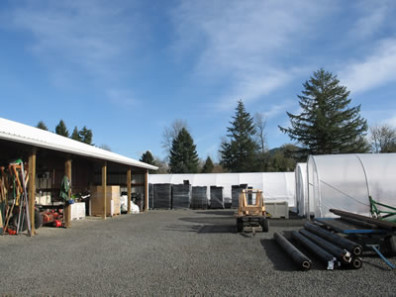 |
| Store used containers that previously had host material separately from those planned for re-use. | 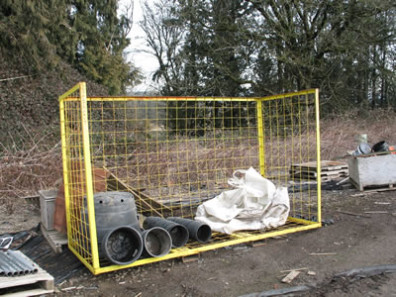 |
| Used containers from host and high risk plants should be recycled if they are not going to be sanitized. Re-using these containers introduces the risk of infection from residual soil and potting media containing disease inoculum. | 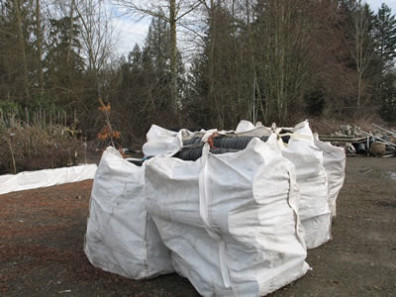 |
| Used pots can be steam sterilized for re-use. This steam cabinet was constructed from materials available at most hardware stores and can be scaled to any size needed.The length of exposure to steam depends on the number of pots being sterilized. | 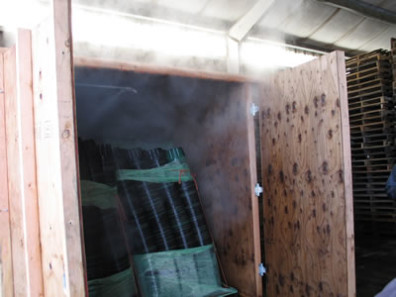 |
| A hot water bath is used to sanitize small containers. Pots are stacked inside the plastic bin, which is lowered into the hot water bath and held for several minutes. Length of time in the bath depends on the number of pots being sanitized. | 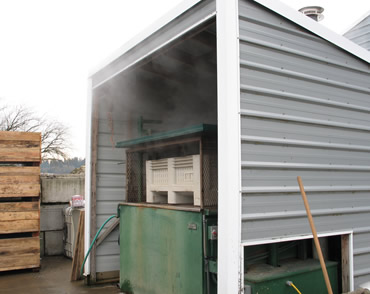 Back to Managing Phytophthora diseases in the nursery Back to Managing Phytophthora diseases in the nursery |
Contact: Gary Chastagner, 253-445-4528 | WSU Puyallup Research & Extension Center, 2606 West Pioneer, Puyallup, WA, 98371-4998 USA
Last updated January 2, 2013
A Phytophthora tentaculata Pest Alert is now available. To date, P. tentaculata has been found infecting plants at three restoration sites – one in Monterey County and two in Alameda County. It has not been found in the soil nor detected on adjacent native vegetation. At the sites, the pathogen has been found on sticky monkey flower (Diplacus [=Mimulus]) and toyon (Heteromeles). Treatment, monitoring, and safeguarding at each location is ongoing to prevent spread.
Phytophthora tentaculata has also been found in five native plant nurseries to date in Butte, Monterey, Placer, and Santa Cruz Cos. on sticky monkey flower (Diplacus aurantiacus), toyon (Heteromeles arbutifolia), coffeeberry (Frangula californica), and Salvia mellifera. All infected plants were destroyed. Nearly 500 samples have been analyzed from native plant nurseries (voluntarily) as well as from additional restoration sites to test for pathogen presence. In response to this situation, numerous native plant nurseries are now implementing best management practices, helping to insure that the best possible quality of plants are being grown. Surveys continue to determine if the pathogen occurs in undisturbed areas, particularly where the native plant nurseries have collected their propagative materials. These are the first detections of this Phytophthora in the US. For more information, contact Kathy Kosta, CDFA, at kathy.kosta@cdfa.ca.gov.
Hansen, E.M. 2015. Phytophthora Species Emerging as Pathogens of Forest Trees. Current Forestry Reports. DOI: 10.1007/s40725-015-0007-7.
Species of Phytophthora are prominent in lists of emerging threats to forest ecosystems. We explore the conditions leading to and the consequences of the emergence of some Phytophthora species from their presumptive coevolved roles in undisturbed forest ecosystems to destructive agents as invasive forest pathogens. Phytophthora species are widespread, relatively abundant, very diverse, and poorly understood in many relatively undisturbed forest ecosystems. Three examples are examined in detail to illustrate the range of pathways to emergence and the varied consequences to forest environments. Phytophthora lateralis causes Port-Orford cedar root disease in western North America and now Europe. Phytophthora ramorum is causing unprecedented mortality in oak and tanoak forests in California, as the cause of sudden oak death, and is killing planted larch in the UK, and Phytophthora cinnamomi kills trees in parts of the world where it has been introduced. Active programs are underway in each case to manage, if not eliminate, their damage. In no case, however, has eradication been achieved. Prevention, by blocking initial introduction, has the highest probability of success.
Roy, B.A.; Alexander, H.M.; Davidson, J.; Campbell, F.T.; Burdon, J.J.; Sniezko, R.; and Brasier, C. 2014. Increasing Forest Loss Worldwide from Invasive Pests Requires New Trade Regulations. Frontiers in Ecology and the Environment. 12(8): 457–465.
Loss of forests due to non-native invasive pests (including insects, nematodes, and pathogens) is a global phenomenon with profound population, community, ecosystem, and economic impacts. We review the magnitude of pest-associated forest loss worldwide and discuss the major ecological and evolutionary causes and consequences of these invasions. After compiling and analyzing a dataset of pest invasions from 21 countries, we show that the number of forest pest invasions recorded for a given country has a significant positive relationship with trade (as indicated by gross domestic product) and is not associated with the amount of forested land within that country. We recommend revisions to existing international protocols for preventing pest entry and proliferation, including prohibiting shipments of non-essential plants and plant products unless quarantined. Because invasions often originate from taxa that are scientifically described only after their introduction, current phytosanitary regulations – which target specific, already named organisms – are ineffective.